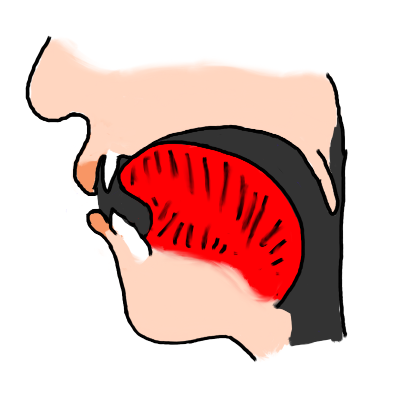How to pronounce escalier
Do you find the information below useful? If you do, you can get guides like it for 1,000+ French words by downloading this app for your iPhone or iPad.
| l |  | The French 'l' is similar to the 'l' in English "with Lee". The tongue tip usually touches the back of the upper teeth. It is also a so-called "clear" l: in other words, you don't raise the back of your tongue as you pronounce the French 'l', as occurs in some cases in English. | |
| e |  | The French 'close e' vowel, often written é, is pronounced with the tongue almost as far forward in the mouth as it will go, and fairly close to the roof of the mouth. Keep your lips fairly spread and aim to "hold your tongue and lips in position" (to avoid producing it as a "glide" or diphthong) as you pronounce it. | |
| s |  | A French 's' sound is made in a very similar way to an English 's' sound, by bringing the front part of the tongue very close to the ridge behind the teeth, causing friction as the air escapes. However, many English speakers use the very tip of the tongue, whereas in French it is common to use the part of the tongue just behind the tip (called the "blade" of the tongue). | |
| k |  | A French 'k' sound (often written "qu" or, as in English, "c") is generally pronounced in a similar way to the English 'k' sound of "skin", "scan" etc. In other words, it is not usually followed by a "strong burst of air" (aspiration) as in the 'k' sound of English "kit", "can" etc. If you are a native English speaker, repeat the word "cool" then "school" while holding your hand in front of your mouth. In the word "cool", you'll feel a stronger burst of air than in "school". In French, you always pronounce the 'k' sound as in English "school", without the strong burst of air. | |
| a |  | The French 'a' vowel is pronounced with the tongue far forward in the mouth and the mouth quite wide open, but not quite as open as for a typical English 'a' vowel. | |
| l |  | The French 'l' is similar to the 'l' in English "with Lee". The tongue tip usually touches the back of the upper teeth. It is also a so-called "clear" l: in other words, you don't raise the back of your tongue as you pronounce the French 'l', as occurs in some cases in English. | |
| j |  | This is a sound a little like an English "y" as in "yes". To pronounce it, you "glide" rapidly between a French 'i' vowel and the following vowel. (And on the end of a word, you pronounce it by going rapidly from the previous vowel to a French 'i' vowel.) Note the phonetic symbol [j] doesn't mean the sound at the start of "je" or "jean". | You might have expected this sound to be a normal i vowel here. However, whenever i is followed by another vowel in French, the two vowels generally "merge" together (technically speaking, they form a diphthong). In other words, you start in the position for a normal i vowel, but then "glide" into the second vowel, which is what you hear in this case. |
| e |  | The French 'close e' vowel, often written é, is pronounced with the tongue almost as far forward in the mouth as it will go, and fairly close to the roof of the mouth. Keep your lips fairly spread and aim to "hold your tongue and lips in position" (to avoid producing it as a "glide" or diphthong) as you pronounce it. |